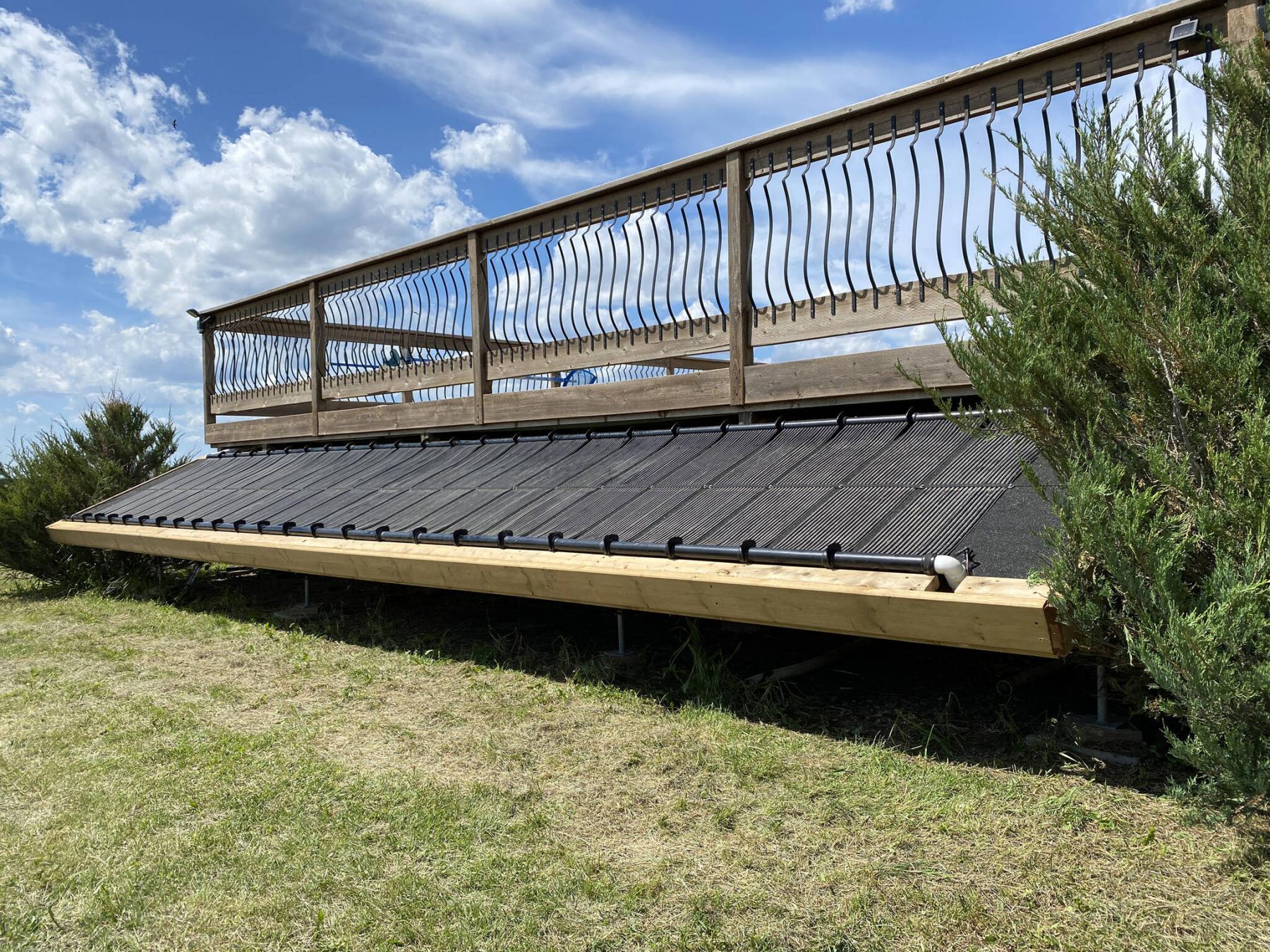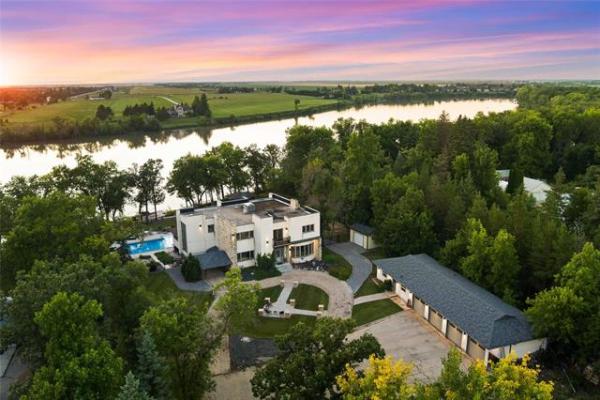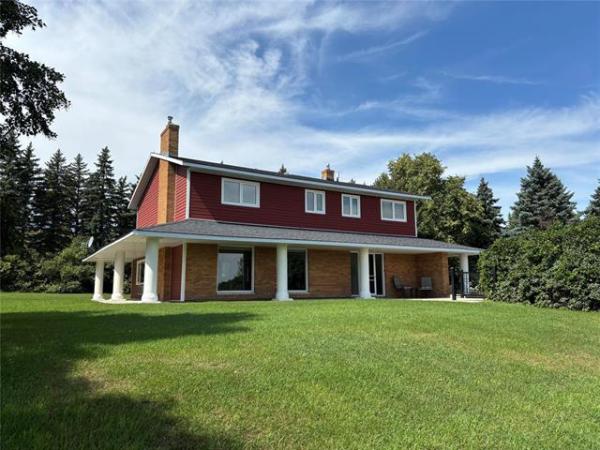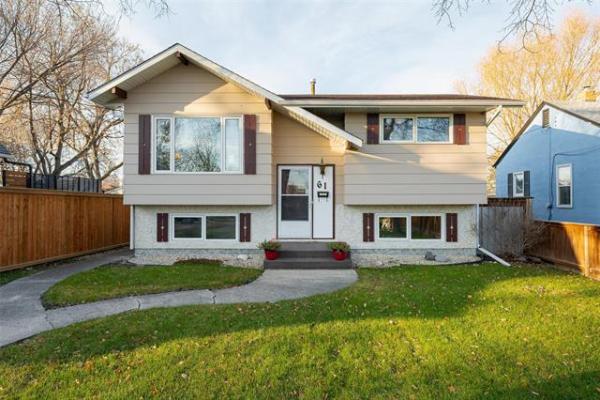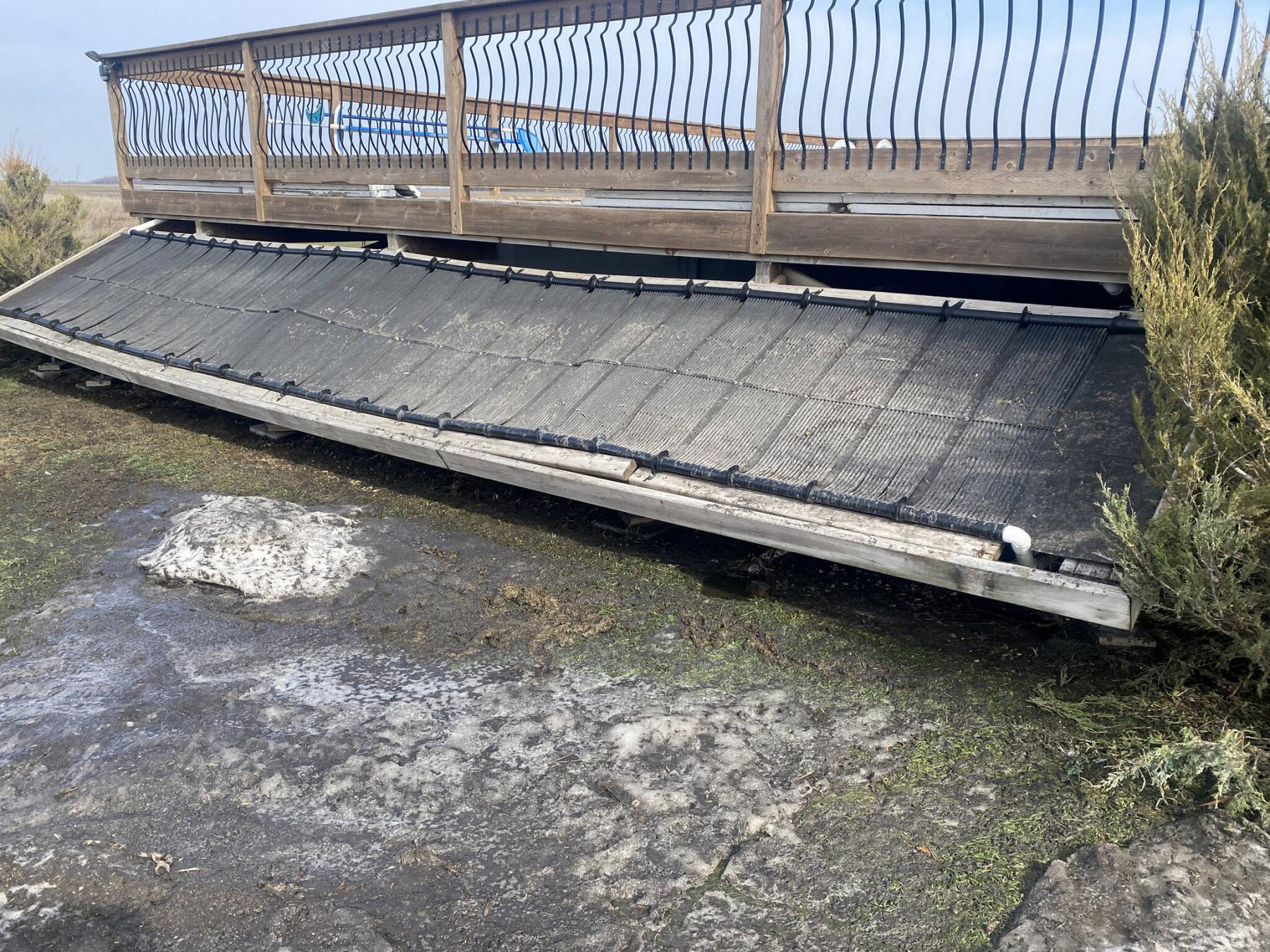
The weight of snow and ice this past winter crushed and destroyed the supports below the old solar structure.
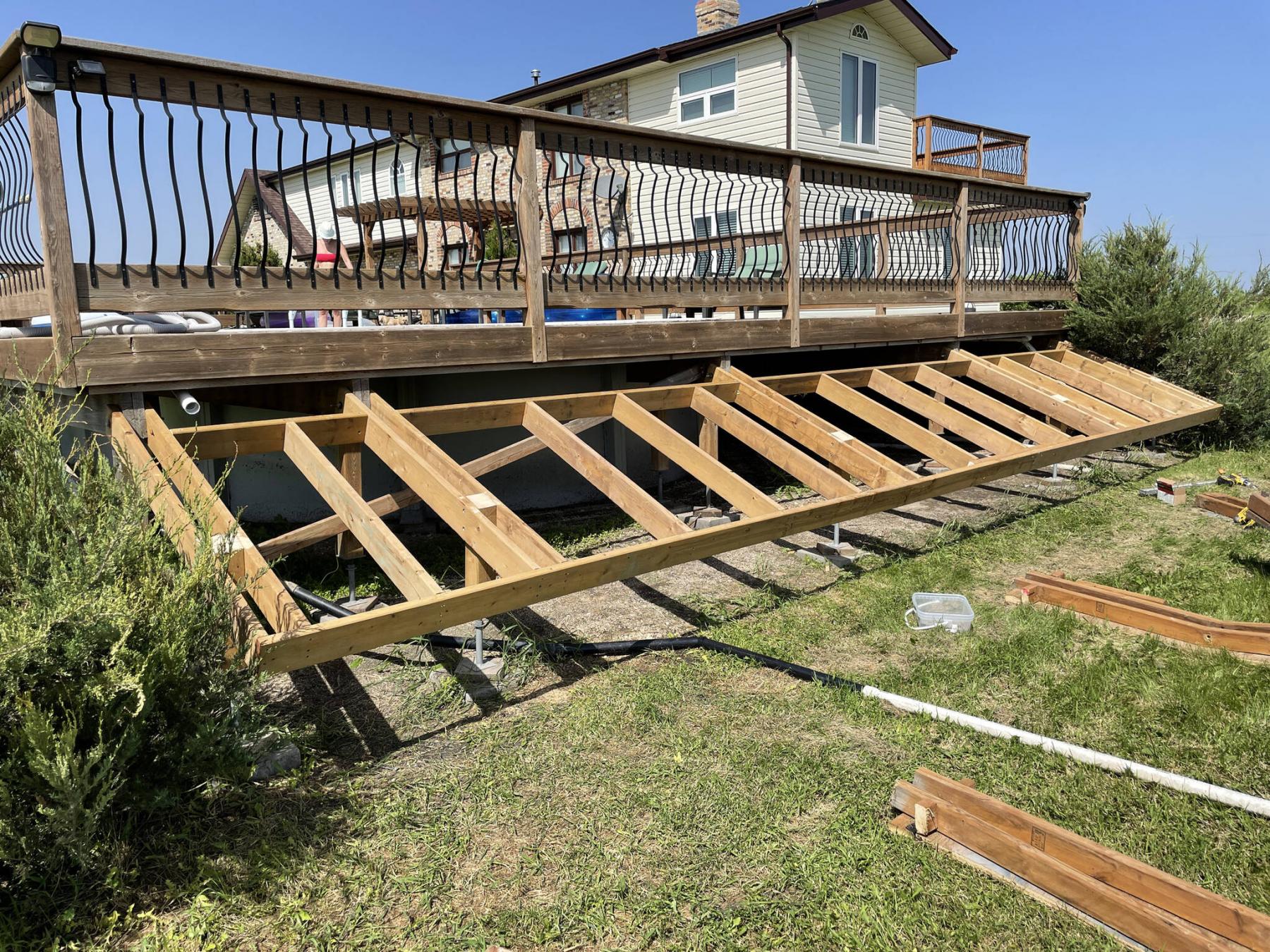
The platform framework is built using 2x6 joists, mounted with tandem main supports to the pool deck’s main beams that rest atop post and pad along the low side.
This past winter wreaked havoc on homeowners, with damage sustained in a variety of capacities. Beyond the pre-scheduled and planned exterior builds over the course of the next months, additional projects have been included for repairs to, or replacements of structures that did not survive the long wait (and weight) of winter: damaged roofs, broken fences, and a deck collapse to name but a few. And this unexpected destruction hit close to home, as well.
Since 2010, relaxing poolside at Boss Ranch is a highly anticipated summer activity. Once Mother Nature’s winter wrath subsides and the melt is evident, the annual process of opening the pool can begin. This spring, however, a series of unfortunate structural failures were revealed throughout the property as the snow retreated, including the ultimate collapse of the solar heating support for the pool.
Along the South end of the main pool deck, a 24-foot-wide and four-foot-tall series of ABS pipes and rubber tubing panels rest atop a 28-foot by five-foot framed support, set at a 45-degree angle towards the sun. An electronic control box that measures the current air temperature against the water temperature in real time either opens the water circulation through the ABS tubing to heat the water during the day to a pre-set pool temperature or closes the diverter to by-pass the ABS and retain the heat already captured. This heating scenario has been in place for a dozen years. Unfortunately, the volume of snow this winter surpassed 13-feet out back, a few feet higher than the top of the railing of the deck. Through a series of melts and re-freezing come spring, the weight of the snow and ice (to my astonishment) destroyed the main supports below the solar structure, snapping the support beams like twigs rendering it non-reparable - the entire structure would need to be replaced.
With the summer heat looming, and this situation preventing the usual pool opening process, it was evident that drastic measures must be taken quickly to in the very least, allow the circulation of water by engaging the pool pump system to commence before the water in the pool, if left stagnant, turns into a big mess of algae. As such, the electronic control mechanism was temporarily disengaged, disallowing any water to circulate through to the solar ABS and rubber tubing panels. As a secondary fail-safe, shut-off valves were also introduced along the main PVC pipes, that send water to and from the solar ABS array. With these initial steps completed, the pool was opened without heating. The damaged solar structure could now be replaced, without any restrictions to the pool filtering processes.
Luckily, the existing ABS headers and rubber tubing panels had avoided any damage – although the framework upon which it rests buckled and split, the tubing above managed to flex just enough to avoid breaking. The strapping that holds the tubing was removed, and manageable segments of the solar array were carefully removed one by one. With the damaged structure below now fully exposed, the sections between main supports were cut out, and discarded. And once the remaining five angled supports were dismantled, the new build could begin using the old pieces as somewhat of a dimensions template.
Firstly, the new angled supports were set into position, using tandem 2x6 boards bolted to either side of the five, pool deck main beams, resting atop post and pad at the low side of each sloped support. The upper and lower end plates were then affixed to the sloped supports, which were then adjusted to ensure the framework was consistently plumb and level. The inner joists were then added on 24-inch centers. Now rigid and solid, three-quarter-inch plywood was affixed to the topside of the angled framework. To promote heat absorption, black adhesive roll roofing was added to the top of the plywood. Along the upper and lower edges of the platform, 2x4 treated lumber was fastened to provide a sturdy surface upon which the solar tubing headers could be affixed. The entire structure’s perimeter was then adorned with 2x6 fascia, for a clean look that mimics the pool and other various decks on the property.
With the new solar platform completed, the ABS and rubber tubing panels were then systematically reinstalled in the reverse order. The upper and lower headers were fastened to the structure along the high and low 2x4s respectively, using the recycled canvas straps and lag screws. The recycled center straps were then fastened mid-way along the rubber tubing panels, in much the same way. The send and return PVC pipes were reconnected to where they had both been cut upon removal of the solar array, and the temperature sensor remounted atop the newly built structure. With everything in place, the temporary shut-offs were opened, and the electronic control panel rebooted. A quick test of the solar revealed the water was cycling through the rubber tubing, with no leaks. We were back up and running!
Damage to property always comes as an unwanted surprise –the original solar support structure had fared well through a dozen winters. Not once I had ever worried that the lumber support below could fail, due to the weight of snow. That being said, a 13-foot-high snow drift completely covering the rear pool deck didn’t seem plausible, either. No matter, the solar support has now been rebuilt, using a more robust approach. As a result, we’re hoping to get another dozen (or so) years of use before having to address another catastrophic failure. After all, we never truly know what Mother Nature ever has up her sleeve.
RenoBoss.Inc@outlook.com

